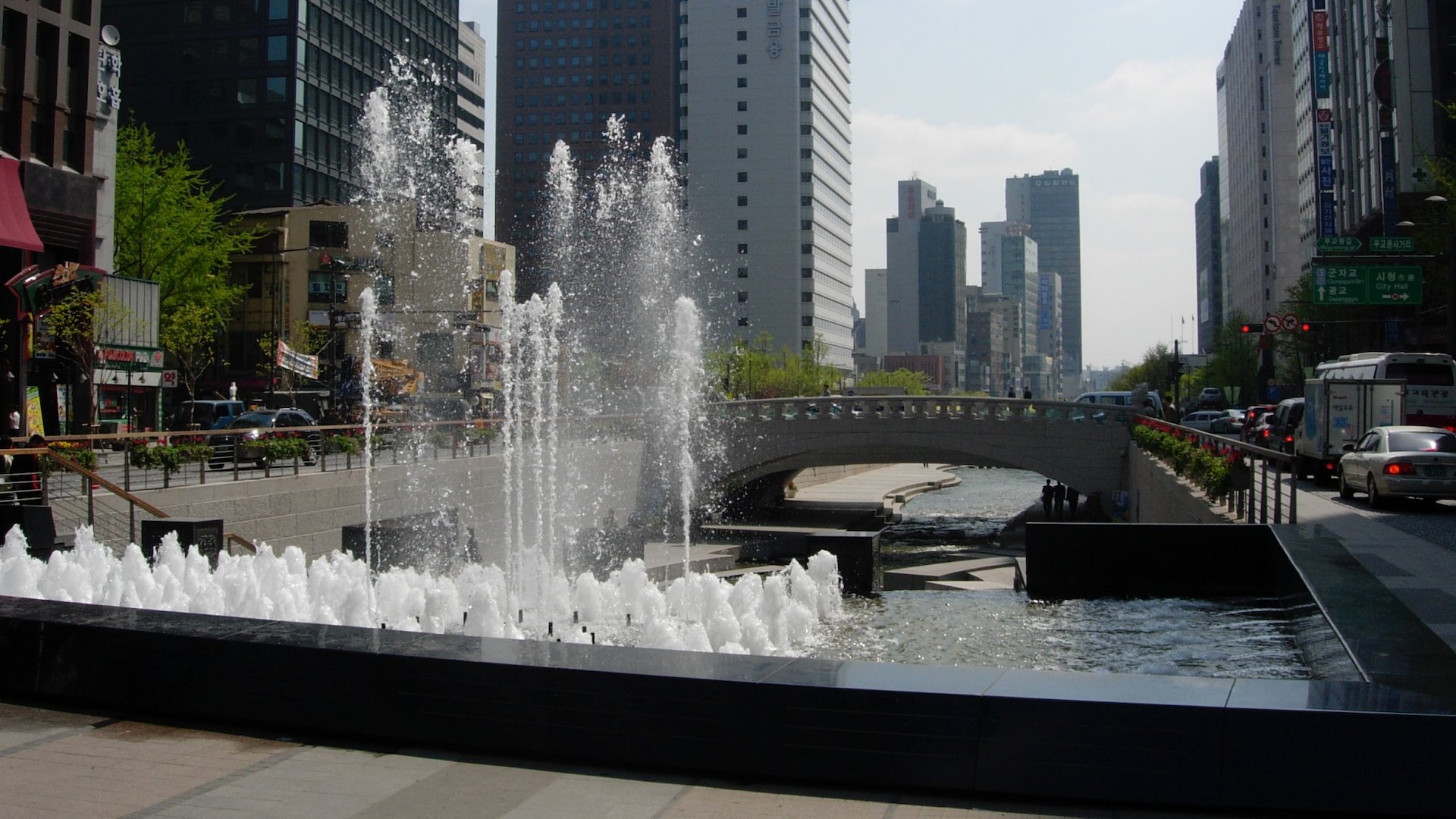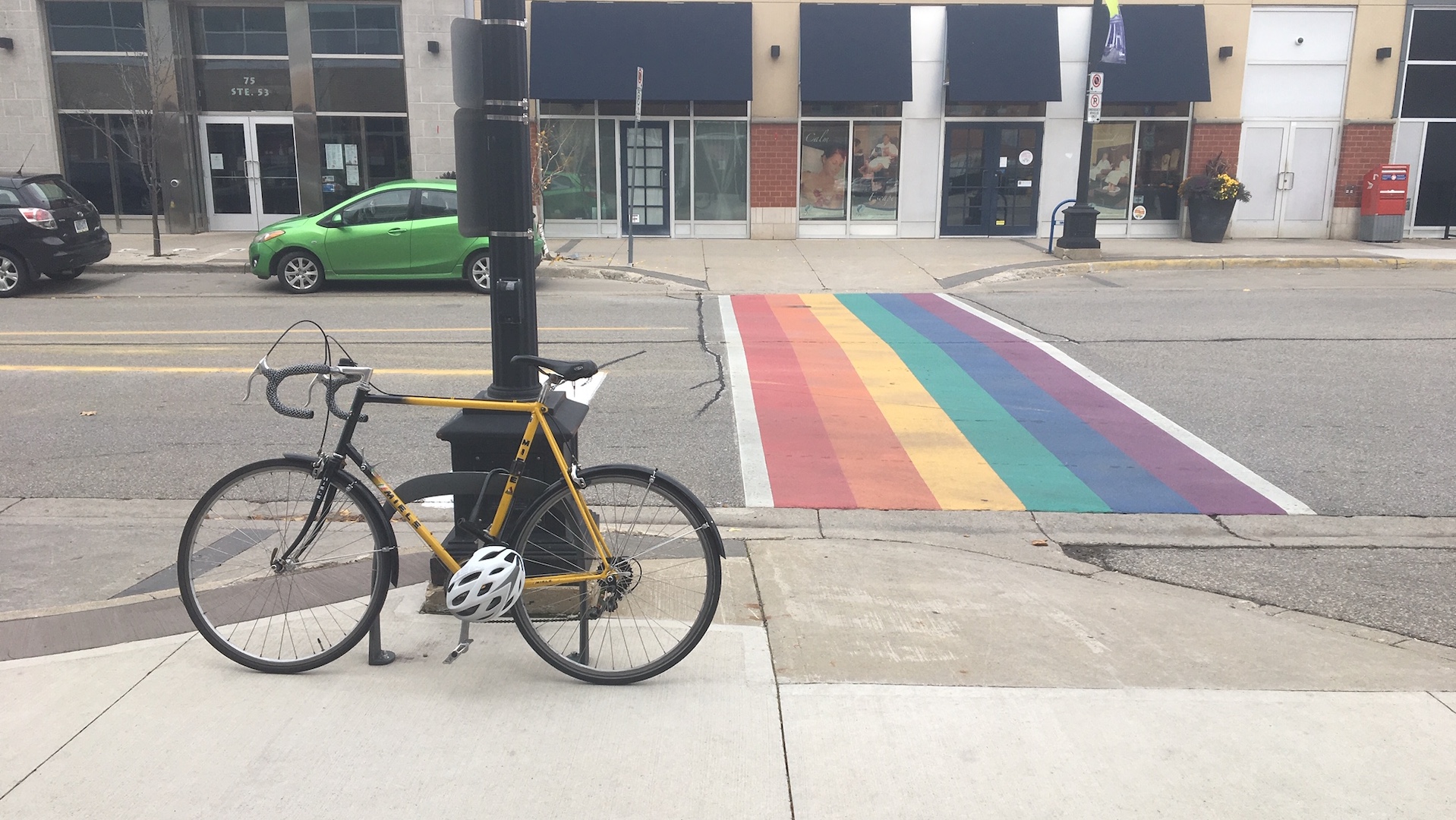Stepping across a rainbow crosswalk may not just be another way to cross the street.
Rainbow crosswalks can boost a person’s mood and influence how people feel in their city.
Traditionally designed around cars, North American cities are taking a page from the urban design playbooks of European ones that favour town squares and narrow roads, and designing with mental health in mind. That means decorated streets and crosswalks, more shrubbery, and pedestrian-friendly flex streets.
Cities are trying to distinguish themselves from other cities, says Robin Mazumder, a Vanier scholar who is completing his PhD in neuroscience at the University of Waterloo. As they do that, what they’re really thinking about is how a city makes a person feel and that has to do with mental health, says Mazumder.
“Urban design to me is about human connection,” he says. “It’s about getting places, and getting places that enable connection.”
Mazumder recently posed a question on Twitter: Do you ever feel like you have to endure a city? The tweet drew more than 200 reactions, with responses such as “constantly,” and “always.”
The Happy City, a Vancouver-based urban planning and design consultancy that uses science to create happier communities, released strategies for building happy cities. One was to build medium-density housing — townhouses, courtyard apartments, and low rises, for example — within an easy, safe, and comfortable walk to shops and services. That’s because walkable, mixed use neighbourhoods are linked to positive social encounters and also have a strong sense of community.
Creating a compassionate city
As urbanization grows, cities are losing the key factors that foster mental health: green spaces and social interaction. That’s led to more research that looks at the effects of urban living on mental health. Some research has found cities are associated with a higher risk of serious mental illness. The issue is such a hot topic, there’s even a Center for Urban Design and Mental Health which tries to take that research and bring it to policymakers to change how cities are designed.
To design a city with mental health in mind, city builders need to pay attention to how people are using spaces and how their behaviour relates to the design of those spaces, says Kasey Klimes, a former city planner and data scientist, who is now a senior user experience researcher at Google.
“There’s lots of spaces where there’s lots of people around and no one uses the space, so we should be looking at why. What isn’t inviting about that space?” Klimes says.
Cities are designed based on the return on investment they provide, for example, to traffic flows or real estate, says Klimes. But mental health and feeling like you belong in a place are harder to quantify, he adds.
“We need to move away from the idea that everything must be measurable and quantified because in doing so, we’re throwing out so much of the human experience,” says Klimes.
And that’s where design thinking comes in.
Mazumder, who has studied design thinking, says the goal should be to create a compassionate city. And that means thinking about what spaces mean and then follow up that thinking by designing in an intentional way, he says.
“That’s what design thinking is all about. It’s about intention,” says Mazumder.
Cities with vibrant main streets, pedestrianized streets, cycling infrastructure, and interesting public spaces become a place to connect, he says. Cities can have those features and build upwards to prevent urban sprawl, Mazumder adds.
Montreal is a good example of a city that’s design for both density as well as cyclists and pedestrians, he points out. The city recently unveiled a plan to prioritize pedestrians over traffic flows.
But along with designing cities for social interaction, cities also need to include spaces for personal solitude as well so that people can get away from traffic noise.
“Cities are incredibly noisy and that affects our mental health,” says Klimes, pointing to a study that found noise negatively impacted children’s mental health.
 (Image courtesy of w00kie on Wikimedia Commons)
(Image courtesy of w00kie on Wikimedia Commons)
Small projects lead to big changes
In 2003, Seoul, South Korea’s then mayor began a project to remove an urban highway, and in its place restored the river that had been paved over and added greenery and walkways. It was all part of a movement to bring nature back to the city and practice urban design in a more eco-friendly way.
But most cities don’t need to tackle such large projects to see change.
Mazumder was part of a research team that measured people’s mood in six Vancouver spots. What they found was that people in the research study were happier at a rainbow crosswalk and an alley that had shrubbery, a bench, and a free little library than they were at a standard intersection and plain alley.
That’s why city builders should bring beauty into urban spaces, says Mazumder. That means narrow roads, more public art, fireplaces and seating, shorter buildings that help add softness to a city, and pedestrianized streets that give people a reason to spend time in a space and intuitively want to connect with each other.
“You don’t need a user manual for an iPhone. You take it out of the box and it’s intuitive,” says Mazumder. “If we were to overlay the process on a city, imagine what that would be like.”





